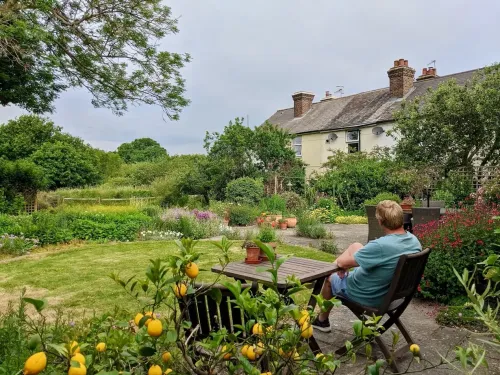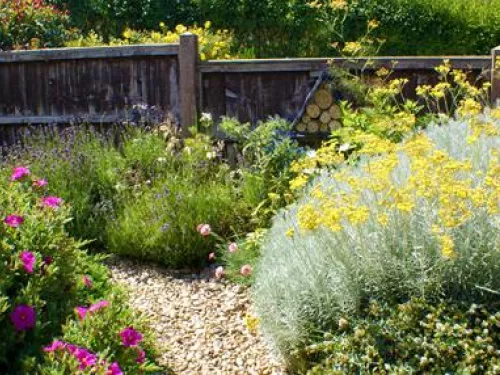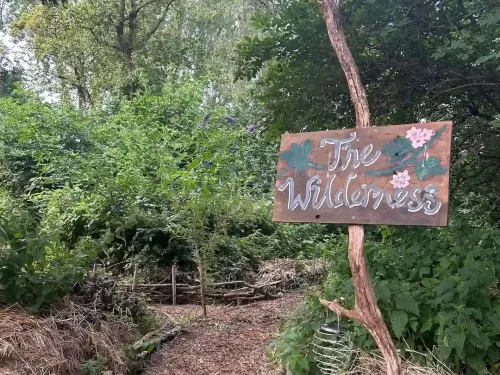
How to create a garden for people and wildlife
Volunteer Wild About Gardens Advisor Penny Brook takes us on a journey through her garden to share how they create a flower-filled haven for both people to relax and wildlife to flourish.

Slugs really come into their own as an important part of the food chain. They provide food for birds, frogs and toads, slow-worms, and several species of spider and ground beetle. Glow-worm larvae feed on slugs. A healthy slug population will help to feed the creatures we love to see in our gardens, such as hedgehogs and thrushes.
Sadly, hedgehog numbers have declined by a shocking 30% over the last ten years. Gardeners waging chemical warfare against slugs have almost certainly played a part in the tragic decline of this much-loved creature. According to the BBC Wildlife website, British gardeners use 650 billion slug pellets each year which then enter the food chain. Tolerating slugs and avoiding poisons is something we can all do to try to halt the decline of the much-loved hedgehog.
Instead of resorting to poisons, you can work with nature to achieve a balance between predators and slugs. We see fewer slugs on top of our compost heap now we have a thriving population of slow-worms there, so perhaps we are witnessing natural pest control in action.

Slow worm eating a slug, © Lee Brady, KRAG
Frogs and toads are also the gardener’s friend as they eat slugs. You can encourage them into your garden by having a pond. Fellow Wild About Gardens advisor Val Rea has one in her vegetable plot as her pest control strategy includes attracting predators to the place where they are most needed.
To increase the quantity and variety of wildlife in our gardens, we really need to learn to tolerate slugs and snails as they are a vital source of food for so many creatures. Gardeners could play an important role in reversing the decline of the hedgehog. Personally, we haven’t reached the stage where we are thrilled to see a slug, as we mourn the loss of favourite plants just like any keen gardener, but we never use poisons against them. Instead, we and other Wild About Gardens advisors have learnt how to cultivate plants in a way that gives them the best chance of survival.
In our next blog, we will share these Wild About Gardens cultivation tips. Wild About Gardens advisors have also pooled their knowledge of plants that seem naturally resistant to slug attack. During the coming year, we will periodically feature selections of wildlife-friendly plants that seem to survive slugs and snails.
KWT’s ‘Wild about Gardens’ scheme is offering advice to gardeners in Kent by telephone this year. Visit our website to enter your garden into the scheme and our trained WAG volunteers will do their best to answer your questions.
How to build a pond - A wildlife pond is one of the best ways to attract wildlife to your garden.

Rich planting in our borders support lots of slugs and snails! © Penny and Peter Brook

Volunteer Wild About Gardens Advisor Penny Brook takes us on a journey through her garden to share how they create a flower-filled haven for both people to relax and wildlife to flourish.

Wild About Gardens Officer Ellen Tout shares how we can all turn our gardens into wildlife havens with these top tips.

This blog about garden wilding is written by Sally Edge, the owner/founder of Langdon Court, where we will host an open garden for the third time in 2025!